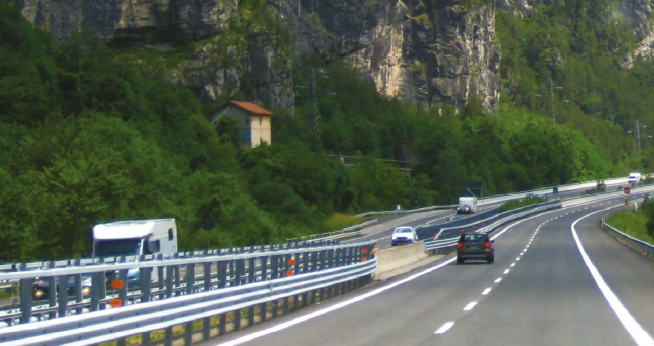
When my wife and I retired we purchased a large motorhome and set off round Australia for three years. The experience made us realise what benefits there were to travelling by motorhome and over the ensuing years we travelled part of the United States and the South Island of New Zealand. Last year we decided to discover Europe.
We flew to Frankfurt and picked up our motorhome in Mannheim, about 85km away. After the usual form filling we had the guided tour in English, learned which buttons to push, etc. and then we were on the road; left-hand drive and right-hand side of the road took a few miles to get used to but we soon arrived at our first campsite on the banks of the River Rhine.
In the morning we found we could not light the stove to boil water – they did not provide matches or a lighter, would you believe. The other thing not provided was a kettle; we were told to boil water in the saucepan and then pour that into the tea cups.
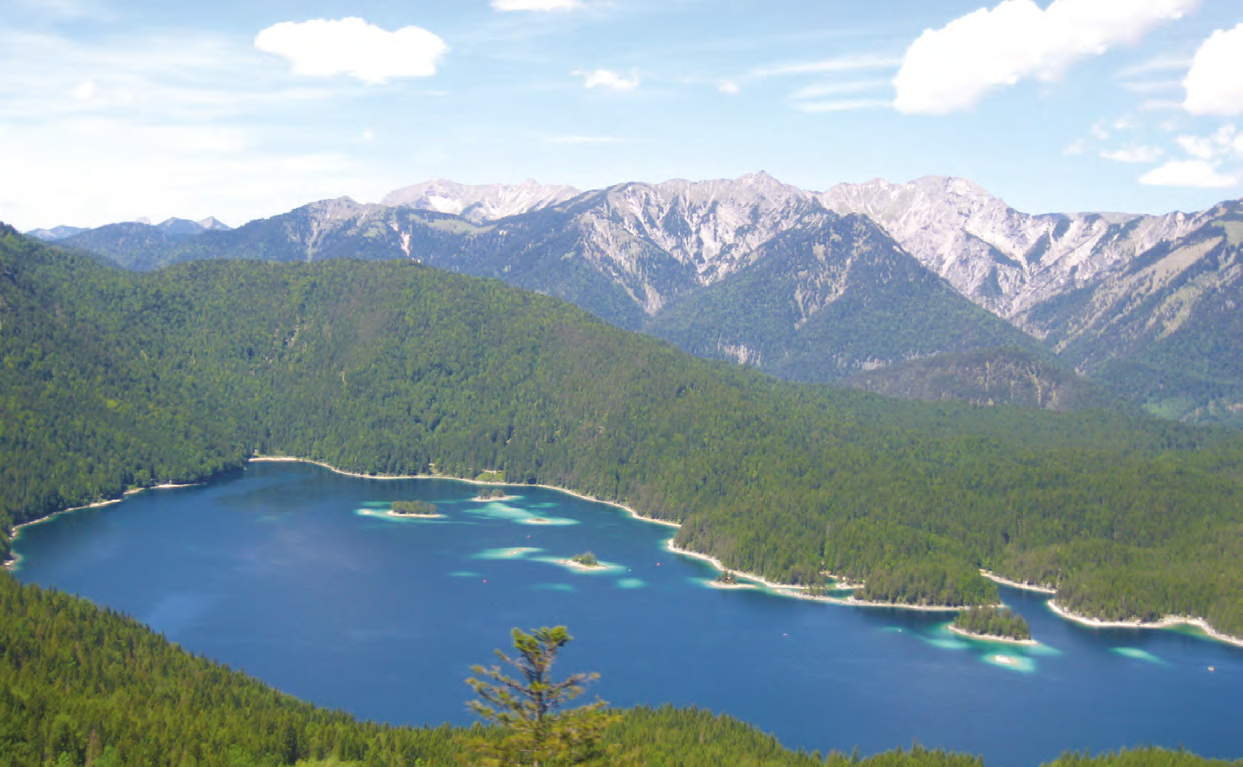
Wonderful view over Lake Eibsee
We drove into the centre of Mannheim for a look round and food. We found a nice pub and had a good lunch for €30 (about $45) – the shock is that Germany has a 19 percent GST.
The city centre was a mixed bag with a ultra-modern shops and offices amid many more being constructed. After breakfast the next morning we paid our park bill (€38). It’s an odd arrangement with the sites in Europe: they charge separately for everything; so much per person; so much for the motorhome/ tent/caravan, depending on size and pay by the kW for power use – each site is metered, and so on. There were separate charges for dogs, showers, and a dozen other things.
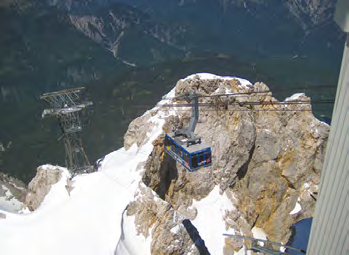
Ascent of Zugspitze mountain via cable car
Our drive took us through some beautiful green country, down a couple of autobahns and eventually we arrived in Bad Mergentheim. More quaint and small Bavarian villages slipped by and finally we arrived at Rothenburg ob der Tauber. We found confusion at the parking meter – different rates for different sized vehicles for different periods of time. Eventually we worked it out and paid €10 for the day’s parking which also included staying overnight. The car park was right outside the city walls, so it was very convenient.
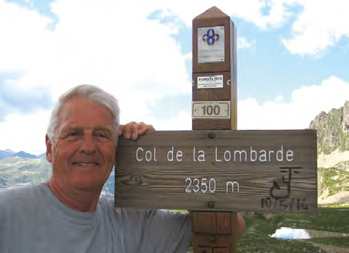
Very high on fresh air in The Alps Maritime
Rothenburg ob der Tauber means the red fort on the River Tauber and is a beautifully presented medieval town with narrow lanes, quaint houses and shops and well preserved public buildings. Our first visit was to St Jakobs Lutheran cathedral (commenced building in 1311) with the first shock of the day – they charge to go into the church. It was magnificent inside with its stained-glass windows and huge organ; the centrepiece being an altar setting in wood depicting the Last Supper carved by Tilman Riemenschneider (c1460 – 1531).
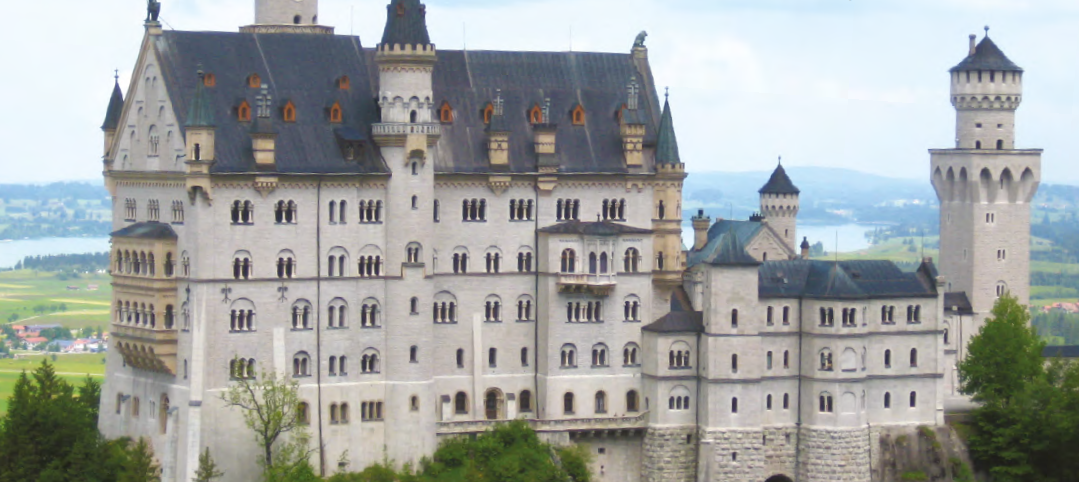
Neuschwanstein inspired Disney’s castle logo
We continued south down the Romantische Strasse (or Romantic Road, as it’s known) towards the German Alps. We visited two more medieval walled towns, Dinkelsheim, again typical of these towns with castle walls and turrets and several large cathedrals. Then it was on 40km to Nordlingen which we preferred in authenticity to Rothenburg. In the evening we visited the craft markets and listened to a local Bavarian band entertaining a crowd.

Landsberg jail had Germany’s most famous inmate: Hitler
The next day we headed south towards the German Alps, through Donauworth to Landsberg am Lech. Landsberg lays claim to be the town where the best-selling book in the German language was written. It was here during his incarceration in Landsberg jail that Hitler wrote Mein Kampf. The jail is still in use today.
We left Landsberg for the 90km drive to Füssen, a pretty town nestled at the foot of the Bavarian Alps. The main reason for our call to Füssen was to visit the palaces of King Ludwig ll – Hohenschwangau and Neuschwanstein. The latter was supposed to be the inspiration for the Disney fairytale castle.
Left the motorhome park at 6.45am to ensure we could get on a tour of the well-known castles. Tickets can be purchased only at the office outside Hohenschwangau Castle (unless pre-booked with a tour) and the office opened at 8am. Seniors’ cards gain a small reduction. It has to be said that these castles are not for people who find it difficult to climb stairs and there is no disabled access – there are no wheelchair ramps or lifts – but many winding staircases to negotiate. Nevertheless, the visit was well worth the aching feet.
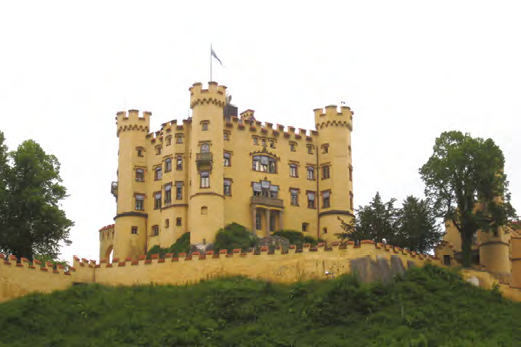
Hohenschwangau Castle is a hot ticket visit
Then it was on towards the Zugspitze Mountain – Germany’s highest. We made a short stop at Oberammergau to look around the shops and to visit the very impressive catholic cathedral with its painted ceiling and golden altars. Four kilometres on is the little town of Ettal in which is situated a beautiful monastery run by Benedictine monks.

Salzburg; once the playground of Mozart
From Garmisch we caught the cogwheel train to the summit. The train winds its way up and then through a two-kilometre tunnel cut through the mountain, ending at the glacier. From here we switched to the cable car for the final ascent to the summit. We were able to stand and admire the view over four countries from the peak: Germany, Austria, Switzerland and Italy. The route down was by cable car from the summit to Lake Eibsee where we caught the train back to Garmisch.

Baroque splendour at Ettal
Leaving Garmisch we drove towards Salzburg via Reit and Berchtesgarten to our destination at Freilassing.
On the way into Salzburg we had to purchase a vignette, which is a sticker to go inside the windscreen and allows you to travel on the Austrian main roads – there are big fines if you are caught without one. The vignettes are easily available from supermarkets and service stations in Germany (near the border) and in Austria.
Salzburg city centre is quite compact and we strolled around the Schloss Mirabell (built in 1606) before heading back over the bridge to the old town where Mozart rules. We escaped Salzburg just before rush hour commenced and found a campsite on Lake Wolfgangsee, which is one of the biggest lakes in the region and beautifully surrounded by mountains. This was the first time in two weeks that we met any English-speaking campers so it was great to sit down with a glass of wine and compare notes.
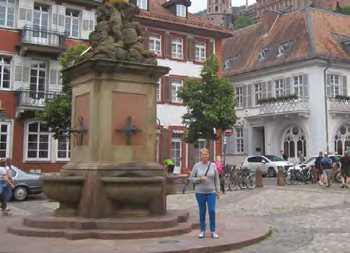
In the town square in medievel Heidelberg
The following day we enjoyed a pleasant drive along part of the A7 motorway with its numerous tunnels cut under and through the mountains towards Vienna. We set up our home at Kritzendorf railway station from where trains run into the centre of Vienna half hourly. We purchased a 48-hour Vienna pass, at a cost of €12.40 each, which covered all suburban, metro trains, trams and buses, as well as giving discounts to many of the city attractions. All public transport is remarkably clean, runs on time and is very easy to access.
On our first day we visited the baroque palace of Schönbrunn and took a tour of the state rooms and private apartments of Austrian Emperor Franz Joseph (reigned 1848-1916) and his wife Elisabeth (assassinated in 1898). We climbed the 343-step spiral staircase of St Stephan’s cathedral and then decided to descend to the depths by joining a tour of the catacombs. It was here they discovered, about 30 years ago, more than 11,000 bodies that had been buried in the late 1700s. Many of the deceased had suffered from bubonic plague.
The next day we visited the Hofburg complex – the imperial residence in Vienna – to see the Treasury where the crown jewels are kept along with many of the Hapsburg jewels. A short walk took us into the Spanish Riding School where we caught an exercise session of the famous Lipizzaner horses.
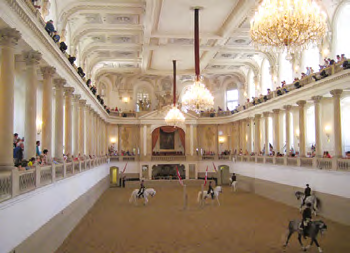
A sight of the Lipizzaner Horses in Hofburg
In part two we cross the Alps into Italy and on to Venice. If members would like our full itinerary and further information on stopovers and prices, etc. please email alindsell@bigpond.com.
Category: Unknown
Written: Wed 01 July 2015
Printed: July, 2015
Published By:
ALAN AND JEANETTE LINDSELL Q47757